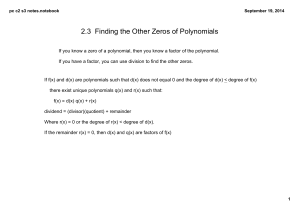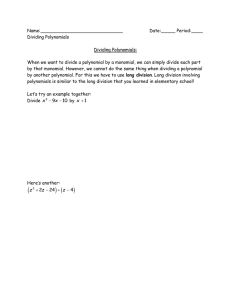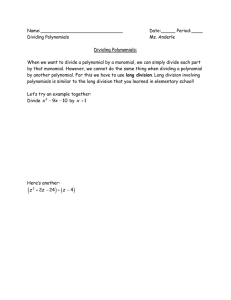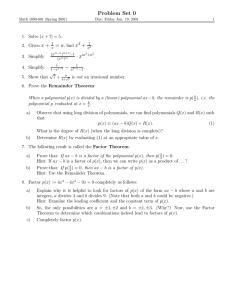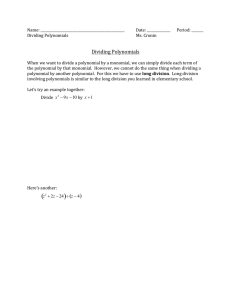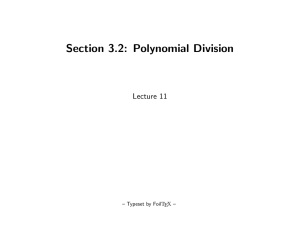2.4 Dividing polynomials; Remainder and Factor Theorems
advertisement
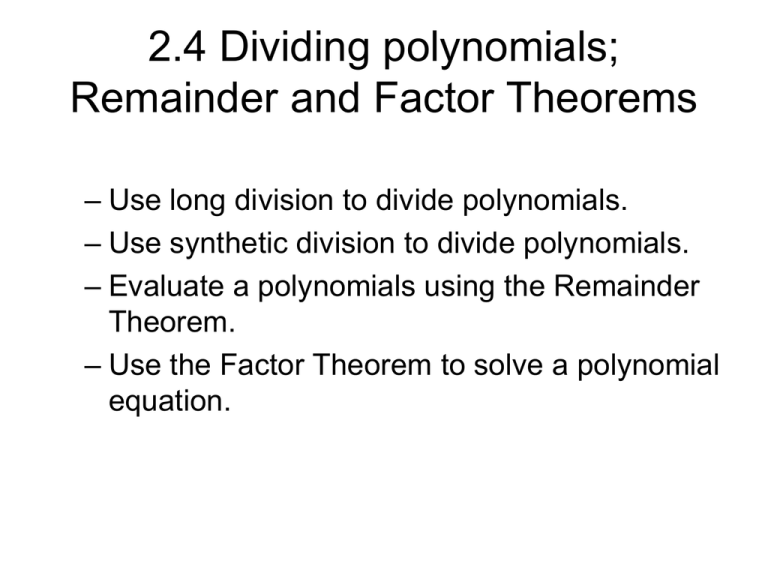
2.4 Dividing polynomials; Remainder and Factor Theorems – Use long division to divide polynomials. – Use synthetic division to divide polynomials. – Evaluate a polynomials using the Remainder Theorem. – Use the Factor Theorem to solve a polynomial equation. How do you divide a polynomial by another polynomial? • Perform long division, as you do with numbers! Remember, division is repeated subtraction, so each time you have a new term, you must SUBTRACT it from the previous term. • Work from left to right, starting with the highest degree term. • Just as with numbers, there may be a remainder left. The divisor may not go into the dividend evenly. Example • Divide using long division. State the quotient, q(x), and the remainder, r(x). (6x³ + 17x² + 27x + 20) (3x + 4) Example • Divide using long division. State the quotient, q(x), and the remainder, r(x). 2 4 x 8x 6 2 x 1 Remainders can be useful! • The remainder theorem states: If the polynomial f(x) is divided by (x – c), then the remainder is f(c). • If you can quickly divide, this provides a nice alternative to evaluating f(c). Synthetic Division • Quick method of dividing polynomials • Used when the divisor is of the form x – c • Last column is always the remainder Example • Divide using synthetic division. x 3 x 2 x 1 Example • Divide using synthetic division. x5 2 x 4 x3 3x 2 x 1 x2 Factor Theorem • f(x) is a polynomial, therefore f(c) = 0 if and only if x – c is a factor of f(x). • Or in other words, – If f(c) = 0, then x – c is a factor of f(x). – If x – c is a factor of f(x), then f(c) = 0. • If we know a factor, we know a zero! • If we know a zero, we know a factor! Zero of Polynomials If f(x) is a polynomial and if c is a number such that f(c) = 0, then we say that c is a zero of f(x). The following are equivalent ways of saying the same thing. 1. c is a zero of f(x) 2. x – c is a factor of f(x) Example • Use the Remainder Theorem to find the indicated function value. f ( x ) x 3 7 x 2 5 x 6; f (3) Example • Use the Remainder Theorem to find the indicated function value. f ( x) x 5x 5x 5x 6; f (2) 4 3 2

